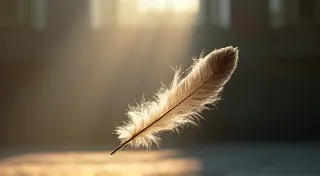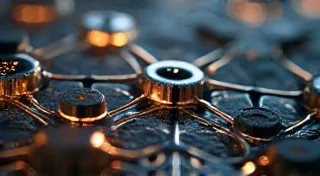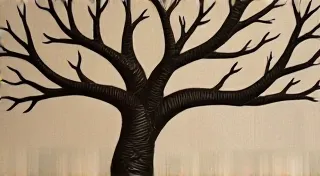The Artisan’s Hand: Exploring the Legacy of Victorian Button Craftsmanship
There's a quiet romance in holding a Victorian button. It’s more than just a fastener; it’s a tiny, tangible echo of a bygone era. These diminutive objects, often overlooked, hold within them a wealth of history, artistry, and the whispers of the hands that created them. For the serious collector, the journey isn't simply about acquiring beautiful pieces, but about appreciating the dedication and skill of the artisans who brought them into being—a world often overshadowed by the narrative of burgeoning industrialization.
The Victorian era (1837-1901) witnessed a dramatic shift in manufacturing. While the rise of factories and mass production undeniably brought affordability and accessibility to a wider population, it also risked diminishing the value placed on individual craftsmanship. Yet, in the realm of buttons, the human element stubbornly persisted, particularly during the early to mid-Victorian years. It’s this delicate balance – the tension between traditional artistry and evolving industrial techniques – that makes Victorian button collecting so rewarding.
Consider a simple horn button. Today, we might imagine a mechanized process, a perfect replica churned out by the hundreds. But back then, the creation of a horn button was often a meticulous, multi-stage process, beginning with the careful selection and preparation of raw horn, often gleaned from cattle horns. A skilled horn-cutter would painstakingly slice the horn into manageable pieces, then a turner would shape it on a lathe, revealing the button's basic form. This wasn’t a purely mechanical process; the turner's eye and hand were crucial in discerning flaws and ensuring symmetry. Subsequent polishing and often, hand-painted detailing, elevated these humble objects into something far more beautiful.
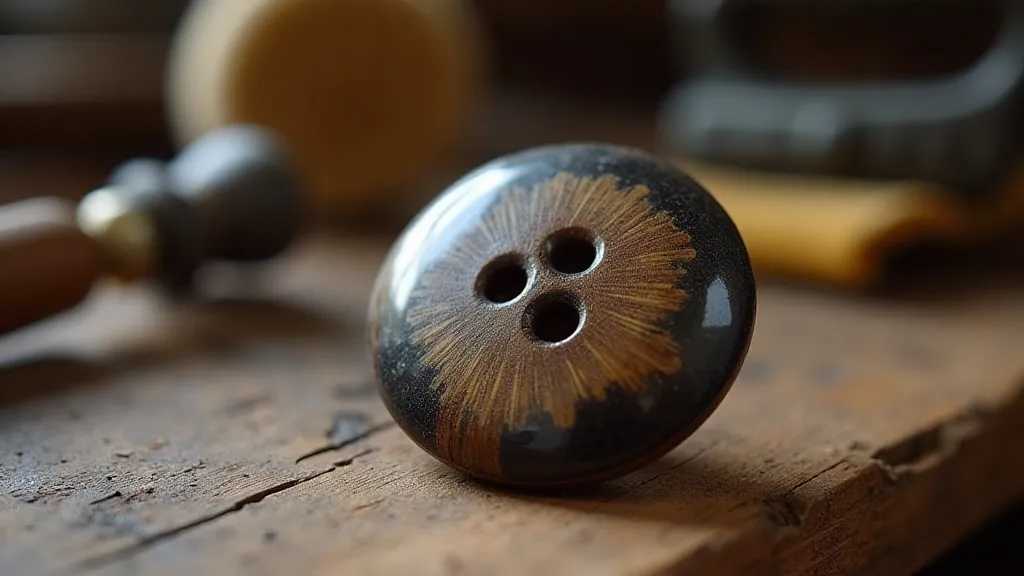
The Materials: A Story in Themselves
The choice of material was intimately linked to the button’s purpose and the wearer’s social standing. Jet buttons, carved from fossilized wood, represented mourning and loss, their somber black hue a visual shorthand for Victorian grief rituals. Mother-of-pearl buttons, iridescent and shimmering, were reserved for the wealthiest, reflecting their status and refined taste. These were not simply “pretty” – the iridescent quality was achieved through painstaking carving and polishing, enhancing the natural beauty of the shell. Bone buttons, often brightly painted with elaborate designs, were common amongst the middle classes. And then there were glass buttons, some elaborately decorated with gold leaf or enamel, which showcased remarkable technical skill.
The stories embedded within these materials are as compelling as the designs themselves. The sourcing of jet from the Dogger Bank in the North Sea; the painstaking carving of mother-of-pearl from the far reaches of the Orient; the ingenious adaptation of readily available bone – each detail speaks to the interconnectedness of Victorian society and its global trade networks. The history and production of these materials weren't always straightforward, and the business of selling these small treasures reveals a fascinating world of Victorian retail. Those interested in the specifics of this world can discover more about the “Catalogues of Curiosities: Unearthing the Lost Worlds of Victorian Button Retail” – a peek into the commercial landscape of the era.
Button Design: A Reflection of the Times
Beyond the materials, the designs themselves offer a fascinating window into Victorian aesthetics and social trends. Early Victorian buttons often featured floral motifs, mirroring the Romantic era's love of nature. As the years progressed, military buttons became increasingly popular, reflecting the country's expansionist policies and the growing importance of the armed forces. Political buttons, bearing slogans and portraits of prominent figures, became a form of grassroots campaigning. The evolution of button design mirrors the societal shifts of the era, offering collectors a surprisingly rich tapestry of history to explore. Many collectors are captivated by the symbolism embedded within these tiny works of art; understanding the subtle clues and recurring motifs is key to appreciating their full significance. For those keen to decipher these visual languages, exploring the intricate details and recurring design elements is a rewarding endeavor. It’s a journey into understanding the nuances of Victorian culture and the stories they wanted to tell.
One can even trace the influence of artistic movements through button design. The Aesthetic Movement, with its emphasis on natural forms and Japanese aesthetics, left its mark on many late-Victorian buttons, leading to a surge in designs inspired by exotic flora and fauna. The precision and attention to detail inherent in these designs highlight the continuing role of the artisan, even as manufacturing techniques became more sophisticated. The rise of factories also impacted the raw materials used, and sometimes resulted in inventive solutions to sourcing and production. The beauty of these objects lies not just in their visual appeal, but also in what they reveal about the prevailing artistic sensibilities of the time – a visual echo of a fascinating era. Understanding these influences provides a deeper appreciation for the intricate relationship between art, society, and the humble button. The concept of “The Poetry of Small Things: Finding Beauty in the Ordinary of Victorian Buttons” perfectly encapsulates this appreciation.
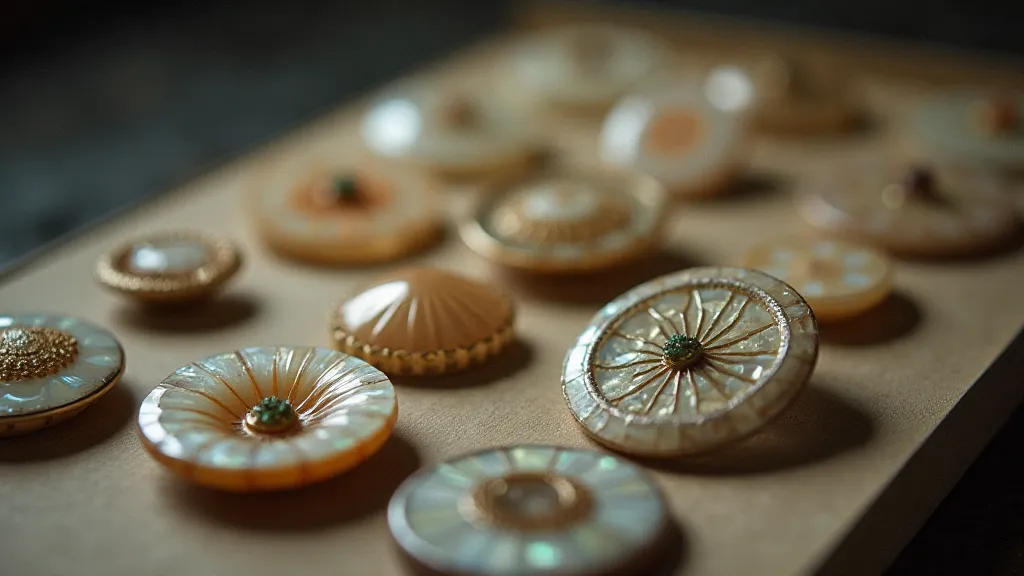
The Rise of Button Factories & the Artisans’ Response
The burgeoning industrial revolution inevitably impacted button production. Early factories, like those established by Charles Horner in Sheffield, initially employed traditional methods alongside machine production, allowing skilled artisans to contribute to the larger output. However, as technology advanced, the demand for mass-produced buttons grew, leading to a decline in the number of individual artisans. While the factory system brought affordability, it also risked homogenizing designs and sacrificing the unique character of handcrafted buttons.
Yet, even within the factory setting, the skill of individual workers remained crucial. Skilled button decorators, for example, were employed to add hand-painted details, enamel work, or elaborate carvings to otherwise machine-produced buttons. These artisans, though working within a more structured environment, were still vital in maintaining the quality and artistry associated with Victorian buttons. It's a testament to their dedication and ingenuity that such beautiful objects survived the transition to mass production. The echoes of those early factories, and the stories of their decline, provide a melancholic reminder of a disappearing craft. A more detailed look into this decline can be found in “The Ghostly Echoes of Horn: A Requiem for Forgotten Button Factories,” which explores the impact on communities and the skilled workers who once thrived in these establishments.
Preserving a Legacy: Collecting and Caring for Victorian Buttons
For the collector, the appreciation of Victorian buttons isn’t simply about accumulation; it’s about preservation. Recognizing the history and artistry embedded within these small objects requires a dedicated approach to collecting and caring for them. Gentle cleaning with soft cloths, careful storage away from direct sunlight and humidity, and a commitment to researching their provenance are all essential aspects of responsible collecting.
Restoration, when necessary, should be approached with caution. Overly aggressive cleaning or attempts to “improve” the button’s appearance can easily diminish its value and historical integrity. The goal is to stabilize and preserve the button's existing character, allowing its story to continue echoing through the years. Understanding the historical context of these buttons is key to proper preservation; a broader understanding of Victorian society will enhance appreciation for these tiny artifacts. Further exploration of the subtle language of Victorian design, and the stories they whisper, reveals a world of cultural significance often overlooked. Consider the many meanings layered within the design of each button, a window into a past culture and its values.
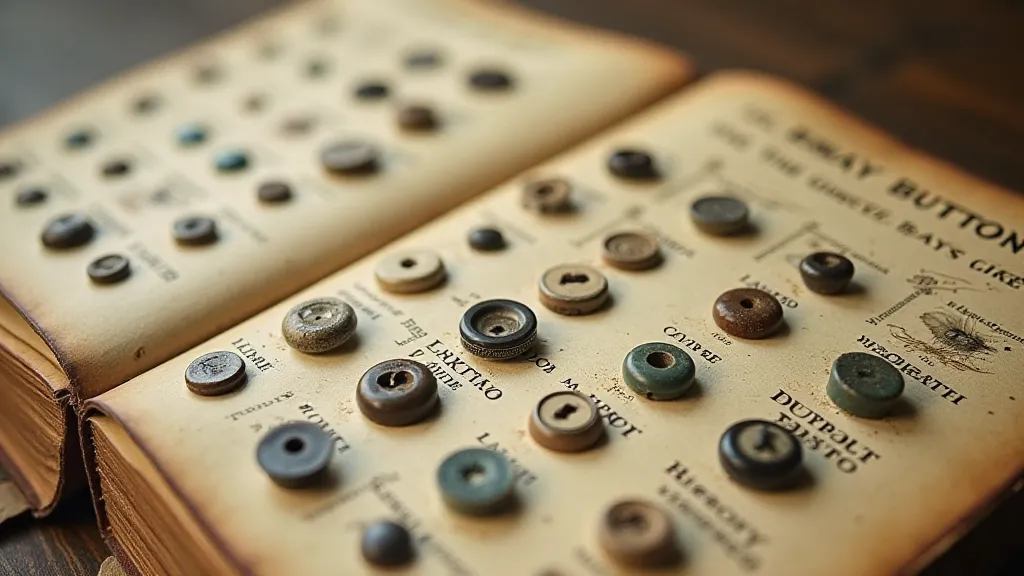
A Tangible Connection to the Past
Holding a Victorian button is more than just holding a piece of history; it’s a tangible connection to the hands that shaped it, the society that cherished it, and the artistry that endured. It’s a reminder that even in an era defined by rapid industrial change, the human spirit – the desire to create beauty and express individuality – continued to flourish. The legacy of these small objects is woven into the fabric of Victorian life, reflecting broader trends in society, trade, and innovation. To truly appreciate the significance of Victorian buttons, one must consider the larger historical context in which they were created and used. They offer a unique window into a bygone era, connecting us to the artisans and societies that brought them to life, reminding us that even the smallest objects can hold profound stories. The intricacies of their design, the materials they’re crafted from, and the stories they represent all contribute to their enduring allure and cultural significance. Discovering these stories is like unlocking a secret language, revealing the hidden meanings embedded within each diminutive masterpiece. The sheer range of styles, materials, and designs across this period highlights a fascinating tapestry of artistic expression and cultural values, and helps us to understand a pivotal moment in history.
